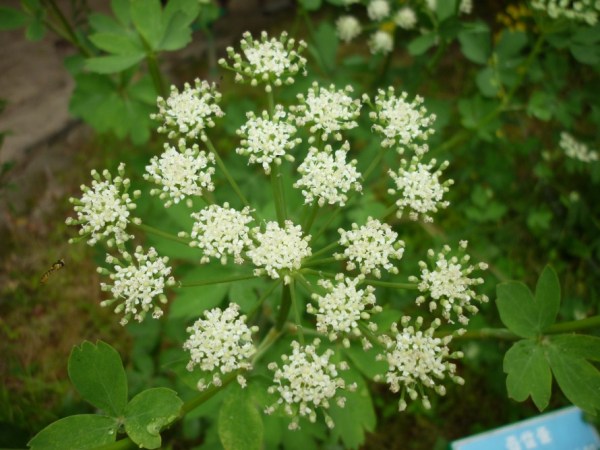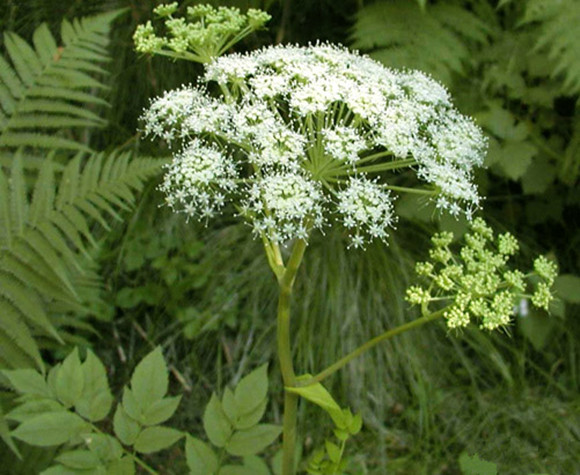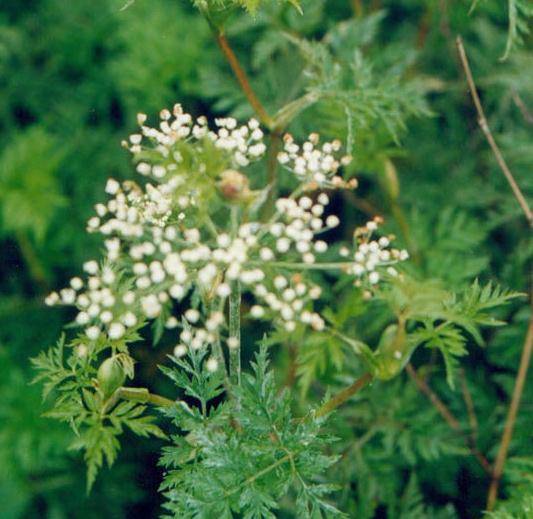- Araliaceae
- Asteraceae
- Campanulaceae
- Caryophyllaceae
- Elaeagnaceae
- Ephedraceae
- Gentianaceae
- Ginkgoaceae
- Guttiferae
- Labiatae
- Leguminosae
- Liliaceae
- Magnoliaceae
- Malvaceae
- Oleaceae
- Orchidaceae
- Orobanchaceae
- Palmae
- Poaceae
- Polygalaceae
- Ranunculaceae
- Rutaceae
- Sarraceniaceae
- Schisandraceae
- Scrophulariaceae
- Solanaceae
- Taxaceae
- Theaceae
- Thymelaeaceae
- Umbelliferae
- Valerianaceae
- Zingiberaceae

Peucedani Radix
- Introduction
- Published data
- Download
Peucedani Radix (Qian-hu in Chinese), the dried roots of Peucedanum praeruptorum Dunn (Apiaceae), has been widely employed for the treatment of cough with thick sputum and dyspnoea, nonproductive cough and upper respiratory infections for centuries in China. On modern pharmacological models, this herbal drug was highly marked for tracheal and pulmonary arteries relaxant, coronary dilatory, myocardial protective, antitumor-promoting and anti-inflammatory activities, etc.
Pubulications:
1. Song Y L, Jing W H, Chen Y G, et al. 1 H nuclear magnetic resonance based-metabolomic characterization of Peucedani Radix and simultaneous determination of praeruptorin A and praeruptorin B[J]. Journal of pharmaceutical and biomedical analysis, 2014, 93: 86-94.
2. Song Y, Song Q, Liu Y, et al. Integrated work-flow for quantitative metabolome profiling of plants, Peucedani Radix as a case[J]. Analytica chimica acta, 2017, 953: 40-47.
Details:
http://herbalplant.ynau.edu.cn/index.php?m=content&c=index&a=show&catid=100&id=208

Pericarpium Citri Reticulatae
- Introduction
- Published data
- Download
Tangerine is one of the most popular fruits. The flesh could be eaten directly or be juice. The peels could be used as food or herbs. Pericarpium Citri Reticulatae and Pericarpium Citri Reticulatae Viride are both from tangerine peels.
Pubulications:
Yi L, Dong N, Liu S, et al. Chemical features of Pericarpium Citri Reticulatae and Pericarpium Citri Reticulatae Viride revealed by GC–MS metabolomics analysis[J]. Food chemistry, 2015, 186: 192-199.
Details:
http://herbalplant.ynau.edu.cn/index.php?m=content&c=index&a=show&catid=100&id=207

Chuanxiong Rhizoma
- Introduction
- Published data
- Download
Chuanxiong Rhizoma (CR), the dried rhizome of Ligusticum chuanxiong Hort., is a well known traditional Chinese medici nal herb commonly prescribed in combinatorial formula for the treatment of menstrual, cardiovascular and cerebrovascular disorders.
Pubulications:
Zhang X L, Liu L F, Zhu L Y, et al. A high performance liquid chromatography fingerprinting and ultra high performance liquid chromatography coupled with quadrupole time-of-flight mass spectrometry chemical profiling approach to rapidly find characteristic chemical markers for quality evaluation of dispensing granules, a case study on Chuanxiong Rhizoma[J]. Journal of pharmaceutical and biomedical analysis, 2014, 88: 391-400.
Details:
http://herbalplant.ynau.edu.cn/index.php?m=content&c=index&a=show&catid=100&id=206

Radix Bupleuri
- Introduction
- Published data
- Download
Radix Bupleuri (RB), with a Chinese name Chaihu, is derived from the roots of
Buplerum chinense DC. and B. sorznonerifolium Willd (Apiaceae) according to the Chinese Pharmacopoeia. As one of the most popular Traditional Chinese herbal drugs, it has been used for about 2000 years in China for treatment of cold, fever, inflammation, and liver diseases.
Pubulications:
Zhu L, Liang Z T, Yi T, et al. Comparison of chemical profiles between the root and aerial parts from three Bupleurum species based on a UHPLC-QTOF-MS metabolomics approach[J]. BMC Complementary and Alternative Medicine, 2017, 17(1): 305.
Details:
http://herbalplant.ynau.edu.cn/index.php?m=content&c=index&a=show&catid=100&id=205